Moves was a wargaming magazine originally published by SPI, which also published manual wargames. Their flagship magazine Strategy & Tactics (S&T), was a military history magazine featuring a new wargame in each issue. While S&T was devoted to historical articles, Moves focused on the play of the games. Each issue carried articles dealing with strategies for different wargames, tactical tips, and many variants and scenarios for existing games. As time passed, reviews of new games also became an important feature. While the majority of the articles dealt with SPI games, the magazine was open to and published many articles on games by other companies.

Conquistador, originally subtitled "The Age of Exploration: 1495–1600", is a board game published by Simulations Publications, Inc. (SPI) in 1976 that simulates the exploration of the New World in the 16th century. Players take on the role of European countries sending expeditions to find gold and establish colonies. Although the design uses the trappings of board wargames such as a hex map, combat is not a major part of the game.

Redmond Aksel Simonsen was an American graphic artist and game designer best known for his work at the board wargame company Simulations Publications, Inc. (SPI) in the 1970s and early 1980s. Simonsen was considered an innovator in game information graphics, and is credited with creating the term "game designer".

A board wargame is a wargame with a set playing surface or board, as opposed to being played on a computer or in a more free-form playing area as in miniatures games. The modern, commercial wargaming hobby developed in 1954 following the publication and commercial success of Tactics. The board wargaming hobby continues to enjoy a sizeable following, with a number of game publishers and gaming conventions dedicated to the hobby both in the English-speaking world and further afield.

Dreadnought, subtitled "Surface Combat in the Battleship Era, 1906-45", is a naval board wargame published by Simulations Publications, Inc. (SPI) in 1975.
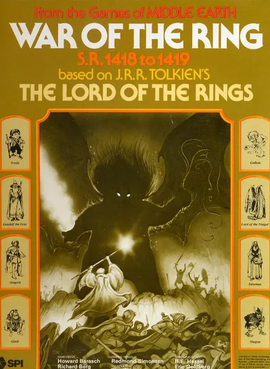
War of the Ring, subtitled "S.R. 1418 to 1419", is a licensed wargame published by Simulations Publications, Inc. (SPI) in 1977 that simulates the events described in The Lord of the Rings by J.R.R. Tolkien.
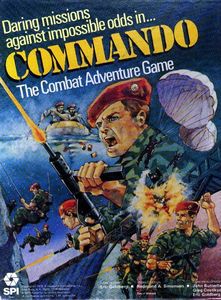
Commando is a role-playing game published by Simulations Publications, Inc. (SPI) in 1979.
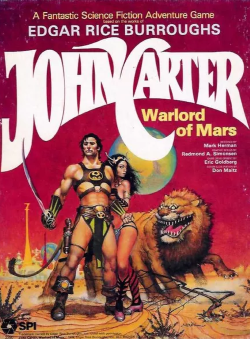
John Carter: Warlord of Mars is a two-player board game published by Simulations Publications, Inc. (SPI) in 1979 that is based on the Barsoom novels of Edgar Rice Burroughs featuring the hero John Carter.
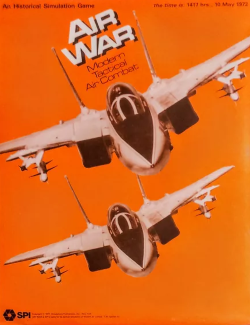
Air War, subtitled "Modern Tactical Air Combat", is a board wargame published by Simulations Publications, Inc. (SPI) in 1977.
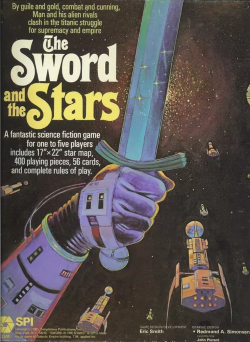
The Sword and the Stars is a science fiction board game of empire building published by Simulations Publications, Inc. (SPI) in 1981 that is based on the rules from the previously published medieval wargame Empires of the Middle Ages (EOTMA).

Dragonslayer is a board game published by Simulations Publications, Inc. (SPI) in 1981 that is based on the movie of the same name.

Adventure Gaming is a booklet published by Simulations Publications, Inc. (SPI) 1981 that contains three short games in different genres meant to introduce players to SPI's range of products.
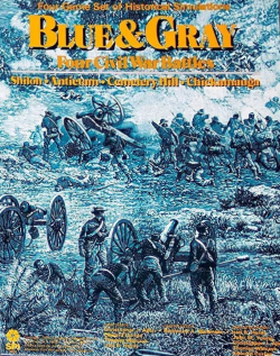
Blue & Gray: Four American Civil War Battles is a board wargame originally published by Simulations Publications, Inc. (SPI) in 1975 that simulates four battles from the American Civil War.

The American Civil War: 1861–1865 is a board wargame published by Simulations Publications Inc. (SPI) in 1974 that is a strategic simulation of the American Civil War.

Frederick the Great, subtitled "The Campaigns of The Soldier King 1756–1759", is a board wargame published by Simulations Publications Inc. (SPI) in 1975 that simulates several of the campaigns of Frederick the Great in Central Europe during the Seven Years' War. When SPI ran into financial difficulties, they sold the rights to the game to Avalon Hill, who produced a second edition in 1982.

Napoleon at War, subtitled "Four Battles", is a collection of four board wargames published by Simulations Publications Inc. (SPI) in 1975 that simulates various battles fought by Napoleon.

Westwall: Four Battles to Germany is a collection of four board wargames published by Simulations Publications (SPI) in 1976 that simulate battles in Europe in late 1944 and early 1945 during World War II.

Chariot: Tactical Warfare in the Biblical Age, 3000-500 B.C. is a board wargame published by Simulations Publications Inc. (SPI) in 1975 that simulates various historical battles during the Bronze Age. The game originally started as Armageddon: Tactical Combat, 3000-500 BC, published in 1972, but was revised in order to become the first game in SPI's PRESTAGS collection.

The Battle of Nations, subtitled "The Encirclement at Leipzig, 16–19 October 1813", is a board wargame published by Simulations Publications Inc. (SPI) in 1975 that simulates the Battle of Leipzig in 1813. It was one of four games that were published as part of the "quadrigame" titled Napoleon at War, but was also released as a "folio game", packaged in a shrinkwrapped cardboard folio. It was popular in a 1976 poll of favorite wargames, and critics also gave it favorable reviews.
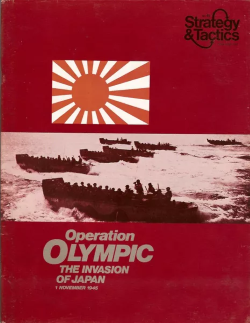
Operation Olympic: The Invasion of Japan 1 November 1945 is a solitaire board wargame published by Simulations Publications, Inc. (SPI) in 1974 that simulates the planned American invasion of Kyūshū, one of Japan's Home Islands, in November 1945. Although critics complimented the game, it did not prove popular, perhaps because it was a solitaire wargame.



















